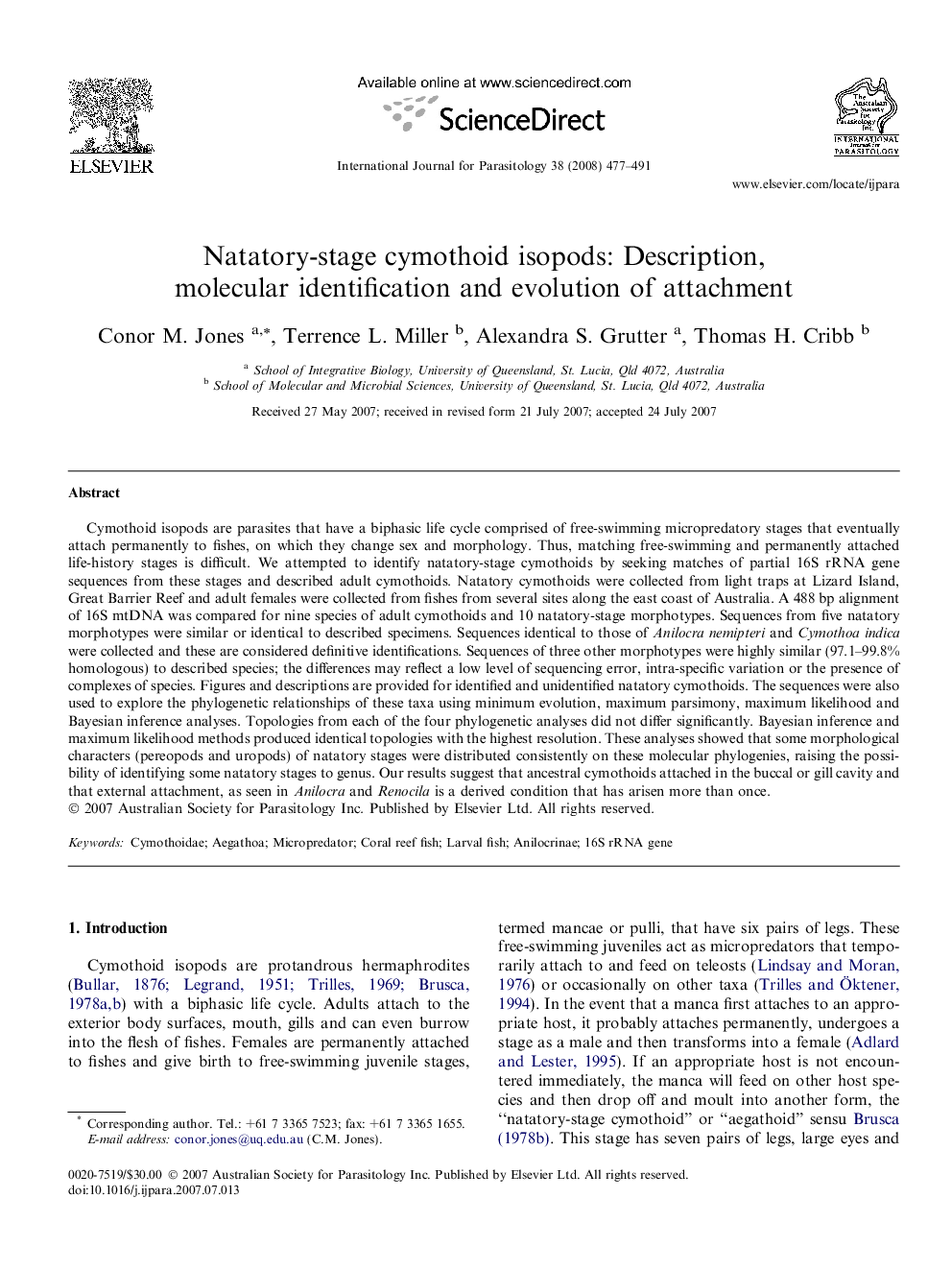| کد مقاله | کد نشریه | سال انتشار | مقاله انگلیسی | نسخه تمام متن |
|---|---|---|---|---|
| 5789544 | 1553735 | 2008 | 15 صفحه PDF | دانلود رایگان |
عنوان انگلیسی مقاله ISI
Natatory-stage cymothoid isopods: Description, molecular identification and evolution of attachment
دانلود مقاله + سفارش ترجمه
دانلود مقاله ISI انگلیسی
رایگان برای ایرانیان
کلمات کلیدی
موضوعات مرتبط
علوم زیستی و بیوفناوری
ایمنی شناسی و میکروب شناسی
انگل شناسی
پیش نمایش صفحه اول مقاله

چکیده انگلیسی
Cymothoid isopods are parasites that have a biphasic life cycle comprised of free-swimming micropredatory stages that eventually attach permanently to fishes, on which they change sex and morphology. Thus, matching free-swimming and permanently attached life-history stages is difficult. We attempted to identify natatory-stage cymothoids by seeking matches of partial 16S rRNA gene sequences from these stages and described adult cymothoids. Natatory cymothoids were collected from light traps at Lizard Island, Great Barrier Reef and adult females were collected from fishes from several sites along the east coast of Australia. A 488Â bp alignment of 16S mtDNA was compared for nine species of adult cymothoids and 10 natatory-stage morphotypes. Sequences from five natatory morphotypes were similar or identical to described specimens. Sequences identical to those of Anilocra nemipteri and Cymothoa indica were collected and these are considered definitive identifications. Sequences of three other morphotypes were highly similar (97.1-99.8% homologous) to described species; the differences may reflect a low level of sequencing error, intra-specific variation or the presence of complexes of species. Figures and descriptions are provided for identified and unidentified natatory cymothoids. The sequences were also used to explore the phylogenetic relationships of these taxa using minimum evolution, maximum parsimony, maximum likelihood and Bayesian inference analyses. Topologies from each of the four phylogenetic analyses did not differ significantly. Bayesian inference and maximum likelihood methods produced identical topologies with the highest resolution. These analyses showed that some morphological characters (pereopods and uropods) of natatory stages were distributed consistently on these molecular phylogenies, raising the possibility of identifying some natatory stages to genus. Our results suggest that ancestral cymothoids attached in the buccal or gill cavity and that external attachment, as seen in Anilocra and Renocila is a derived condition that has arisen more than once.
ناشر
Database: Elsevier - ScienceDirect (ساینس دایرکت)
Journal: International Journal for Parasitology - Volume 38, Issues 3â4, March 2008, Pages 477-491
Journal: International Journal for Parasitology - Volume 38, Issues 3â4, March 2008, Pages 477-491
نویسندگان
Conor M. Jones, Terrence L. Miller, Alexandra S. Grutter, Thomas H. Cribb,